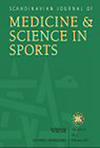Residual Effects of Physical Exercise After Periods of Training Cessation in Older Adults: A Systematic Review With Meta‐Analysis and Meta‐Regression
IF 3.5
2区 医学
Q1 SPORT SCIENCES
引用次数: 0
Abstract
We aimed to determine the persisting effects of various exercise modalities and intensities on functional capacity after periods of training cessation in older adults. A comprehensive search was conducted across the Cochrane Library, PubMed/MEDLINE, Scopus, and Web of Science Core Collection up to March 2024 for randomized controlled trials examining residual effects of physical exercise on functional capacity in older adults ≥ 60 years. The analysis encompassed 15 studies and 21 intervention arms, involving 787 participants. The exercise and training cessation periods ranged from 8 to 43 weeks and 4 to 36 weeks, respectively. Meta‐analyses were performed using change scores from before the physical exercise to after the training cessation. The effect sizes (ES) were calculated as the standardized mean differences between the intervention and control groups' change scores. Subgroup analyses and meta‐regressions explored the influence of participant characteristics, the magnitude of the effect produced by the initial training program, various exercise modalities (resistance and multicomponent training) and intensities (high and low), and subdomains of functional capacity (agility, balance, standing ability, walking ability, and stair walking). The findings revealed that exercise interventions had a significant effect on preserving functional capacity after training cessation (ES = 0.87;老年人停止训练后体育锻炼的剩余效应:Meta -分析和Meta -回归的系统回顾
我们的目的是确定各种运动方式和强度对老年人停止训练后功能能力的持续影响。我们在Cochrane图书馆、PubMed/MEDLINE、Scopus和Web of Science核心馆藏中进行了一项全面的检索,检索了截至2024年3月的随机对照试验,研究了体育锻炼对60岁以上老年人功能能力的剩余影响。该分析包括15项研究和21个干预组,涉及787名参与者。运动和训练停止期分别为8至43周和4至36周。使用体育锻炼前到停止训练后的变化得分进行Meta分析。效应量(ES)计算为干预组与对照组的改变评分的标准化平均差异。亚组分析和meta回归探讨了参与者特征的影响、初始训练计划产生的影响程度、各种运动方式(阻力和多组分训练)和强度(高强度和低强度)以及功能能力的子域(敏捷性、平衡能力、站立能力、行走能力和楼梯行走)。研究结果显示,运动干预对停止训练后保持功能能力有显著影响(ES = 0.87;p & lt;0.01)。这种保护作用在不同的运动方式和强度中是一致的(ES≥0.67;P≤0.04)。训练期间获得的益处与训练结束后观察到的剩余效应呈正相关(β = 0.73;p & lt;0.01),而年龄对持续适应具有负向影响(β = - 0.07;p & lt;0.01)。目前的证据表明,无论运动方式和强度如何,以运动为基础的干预措施在预防老年人停止训练后的功能衰退方面都非常有效。
本文章由计算机程序翻译,如有差异,请以英文原文为准。
求助全文
约1分钟内获得全文
求助全文
来源期刊
CiteScore
7.90
自引率
4.90%
发文量
162
审稿时长
3 months
期刊介绍:
The Scandinavian Journal of Medicine & Science in Sports is a multidisciplinary journal published 12 times per year under the auspices of the Scandinavian Foundation of Medicine and Science in Sports.
It aims to publish high quality and impactful articles in the fields of orthopaedics, rehabilitation and sports medicine, exercise physiology and biochemistry, biomechanics and motor control, health and disease relating to sport, exercise and physical activity, as well as on the social and behavioural aspects of sport and exercise.

 求助内容:
求助内容: 应助结果提醒方式:
应助结果提醒方式:


